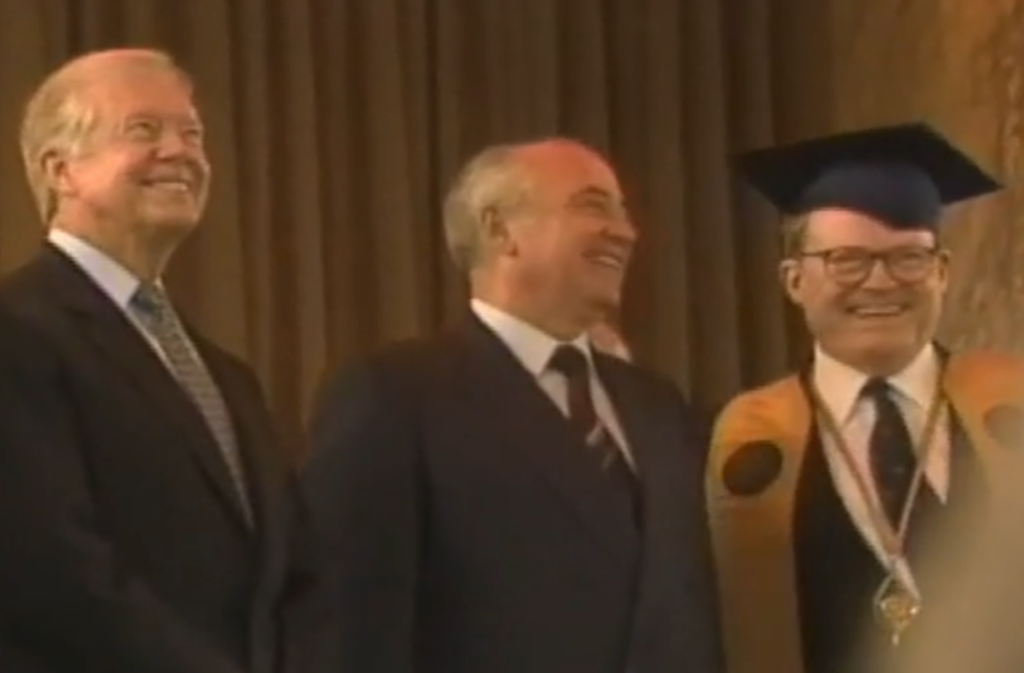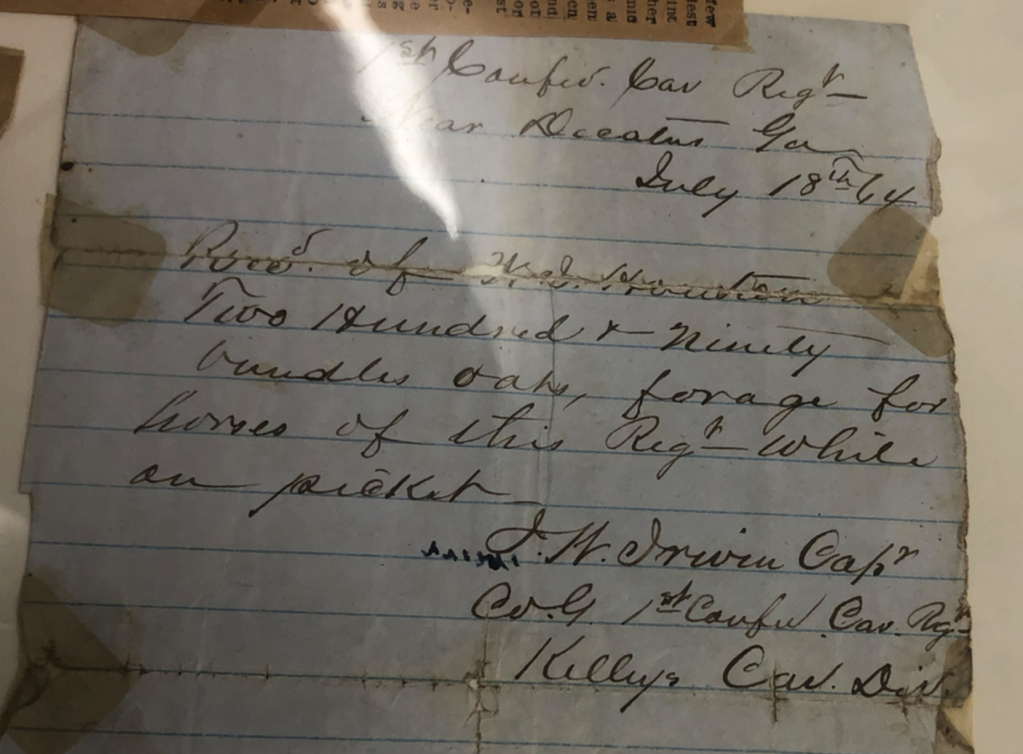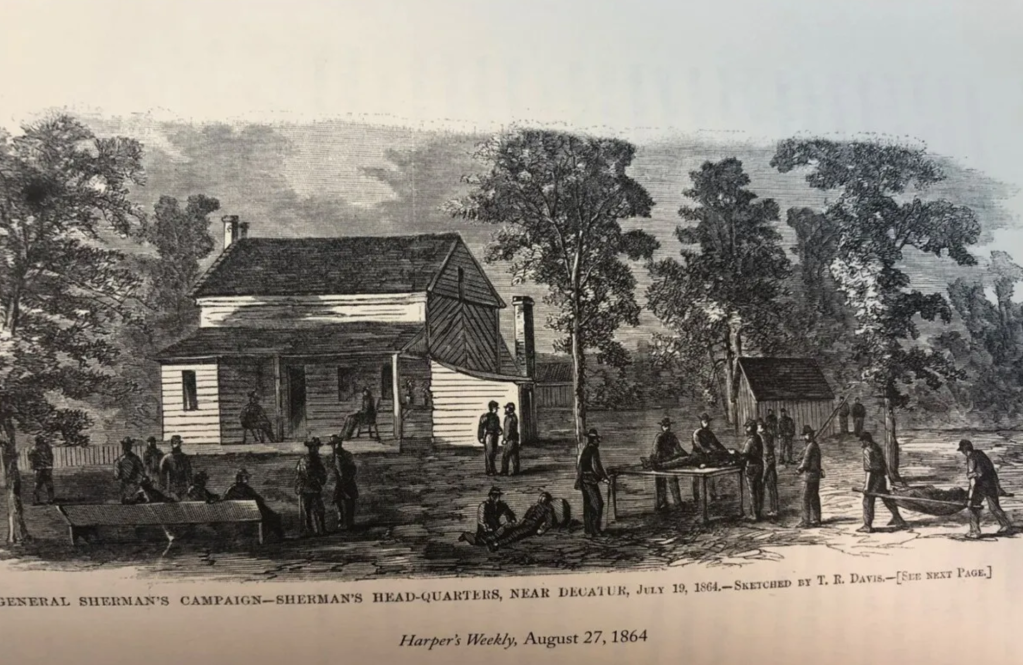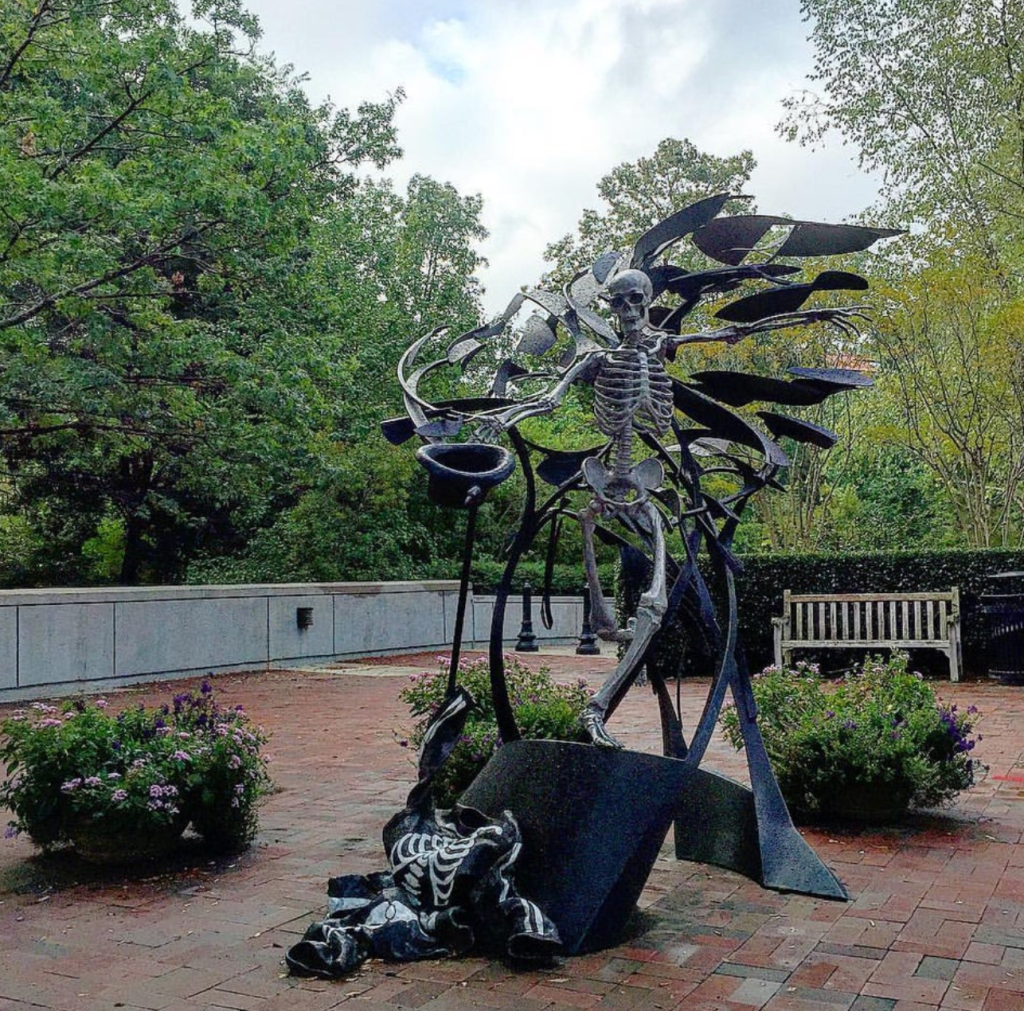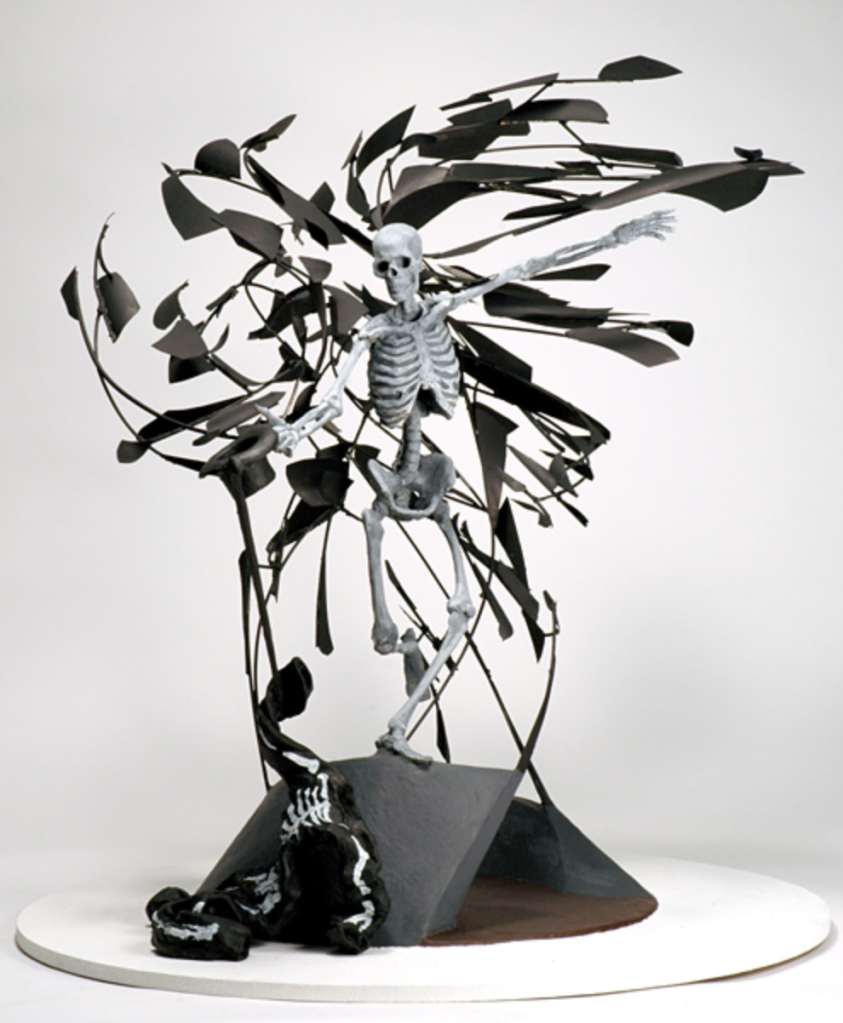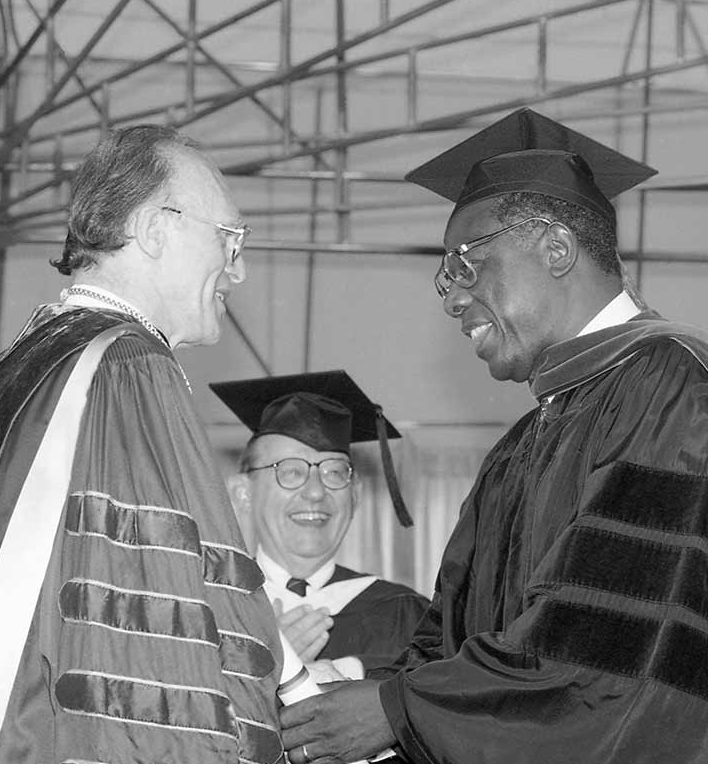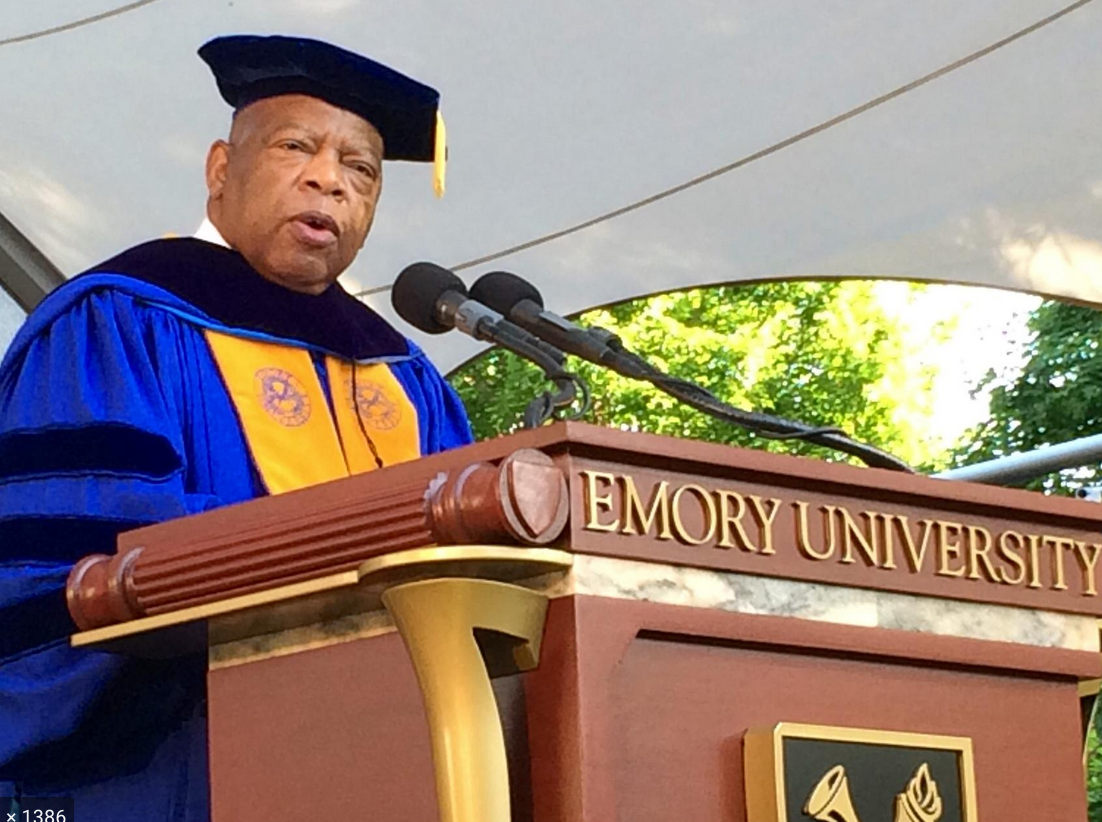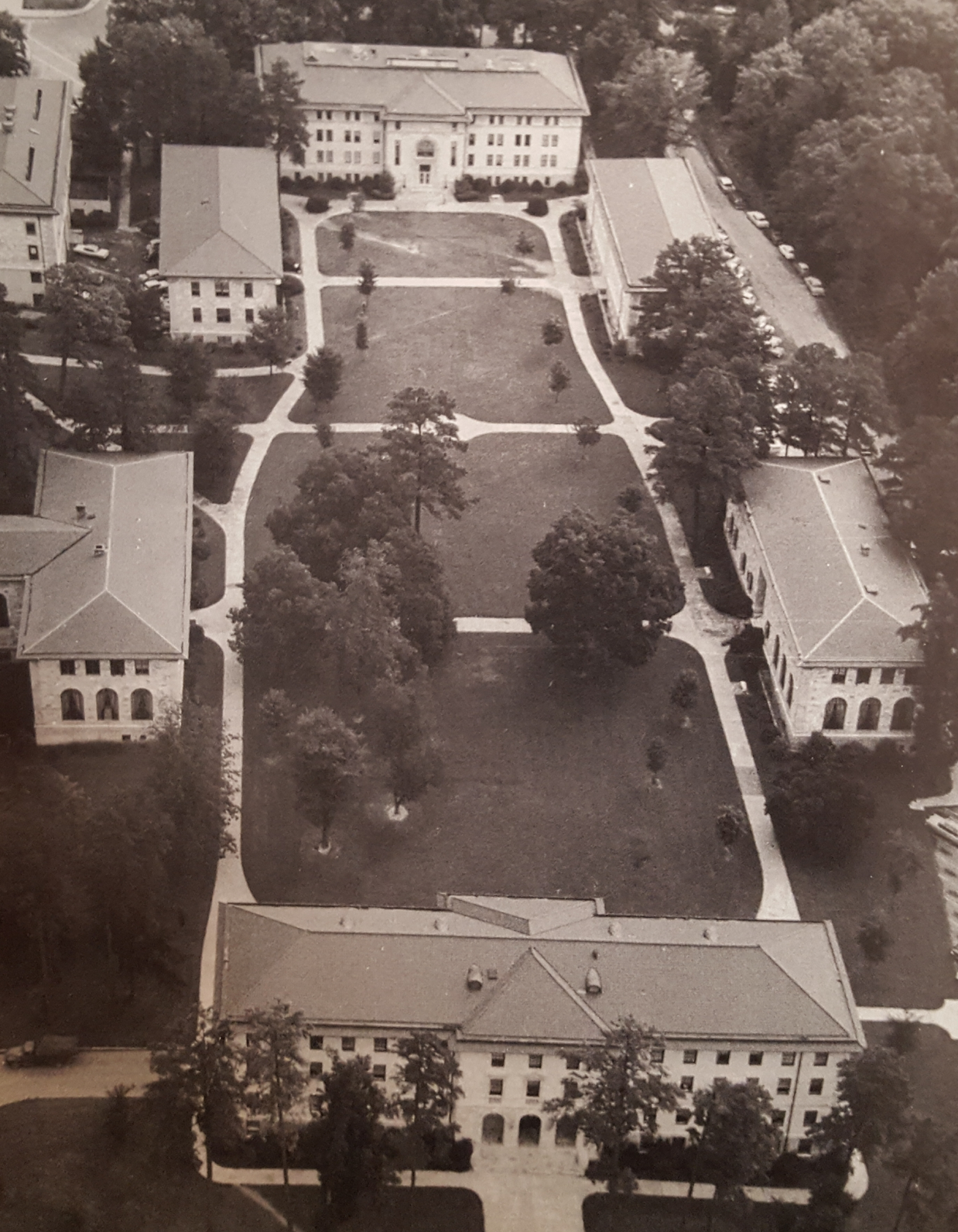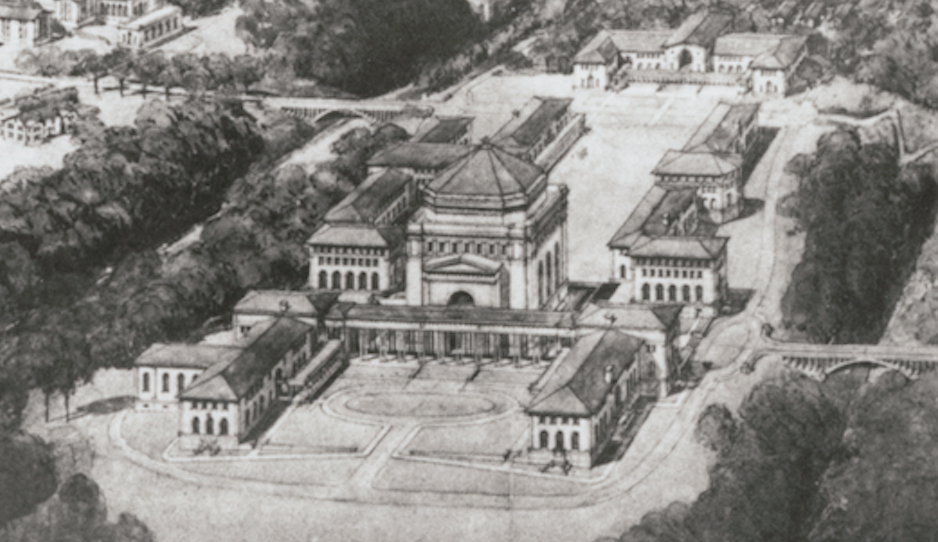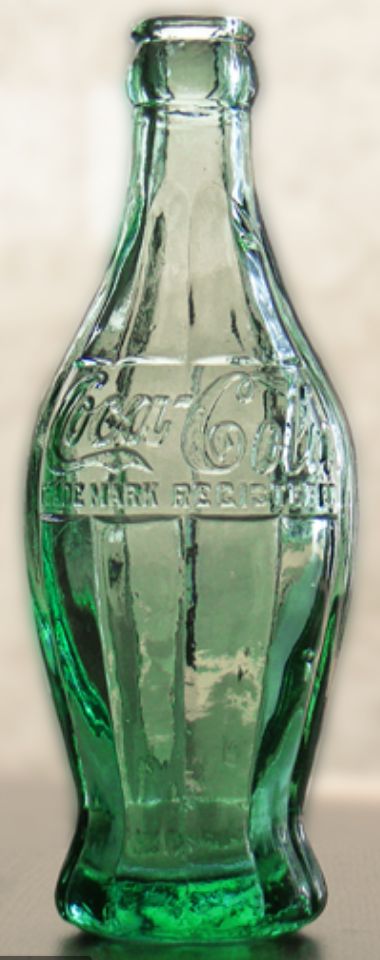by Cynthia Patterson, Professor of History Emerita, Emory University
Note: A somewhat longer version of this text was presented as a lecture to the Emory University Emeritus College on March 18, 2024. Gary Hauk
The significant and direct involvement of Emory University’s Michael C. Carlos Museum with the antiquities market over the past twenty-five years has resulted in collections that startle visitors with their quality and have pushed the Carlos into the upper echelons of U.S. museums, so that some would speak of “The Carlos” in the same breath as “The Getty” or “The Met,” at least with regard to Greek antiquities. Yet how this happened is something about which all Emory faculty members and students should be concerned. The cost—not only in dollars but also in ethical principles and reputation—may have been higher than they realize.
Nothing is more important in an academic community than a commitment to open and critical inquiry, both in our individual disciplines and in the running and management of the university and its institutions, including the university museum. In that vein, it is time for Emory to make the Carlos collections a focus for educating our community and the larger public not only about art and artifacts but also about what could be called “anti-archaeology”: the networks of illicit excavation and trafficking that strip ancient objects of their historical value and their ability to teach us about the societies that produced them, not to mention robbing nations of their cultural heritage. A forthright accounting of what happened at the Carlos would be an act of responsibility of which the Emory community could be rightly proud, and which would serve as a foundation for future acquisitions, gifts, provenance research—and the Carlos Museum’s contribution to the educational mission of Emory.
My own education about these issues began in 2015, when I started to teach directly with the objects in what I call the ancient Mediterranean collections at the Carlos and to investigate their labels and provenance. The more I learned, the more I discovered that the Carlos (and even some of my colleagues) was not interested in my questions and concerns. The more I learned, the better I understood the concern expressed many years ago by Prof. Robin Rhodes, of Notre Dame, an archaeologist and a long-time friend, when he learned that the Carlos Museum had hired Jasper Gaunt to curate the Greek and Roman collections. Gaunt’s decade-long association as employee and partner of Robert Hecht, perhaps the central figure in the illicit antiquities market at that time, was well known to those working to expose and combat the looting of ancient sites and the trafficking of looted objects.[1]
When Gaunt was fired in May 2018, I thought that there would be a change of course and the inauguration of a genuine discussion of “market issues” at the Carlos, but that did not happen. I wrote to university administrators but received only polished assurances that all was well, and that of course Emory was interested in the highest ethical standards for the museum’s management and collections. When the former director retired in 2021, I again had hopes that new leadership would turn things around. In March of 2023, however, the museum and the university repatriated to Iraq a small ivory artifact purchased in 2006 that had been looted from the Baghdad Museum, most likely in 2003. Rather than discuss the context and issues openly, the museum spun the story in a different way, and my patience ran out. And so, when Stephanie Lee of the Chronicle of Higher Education contacted me in May 2023 to ask if I would be willing to talk about my experiences with the Carlos, I said yes. I kept on talking, and here I am, still talking.
Best Practices in Museum Collecting in the era of UNESCO 1970
I begin by stepping back and looking briefly at the larger picture of the world of museum collecting in 1985, when the newly configured and reconceived Emory Museum of Art and Archaeology opened its doors in the renovated Law Building, now Michael C. Carlos Hall. I was there. It was the spring of my first year at Emory. The opening of the new museum took place politically and culturally in the immediate wake of the approval by the U.S. Congress two years earlier of the 1970 UNESCO convention (or treaty) on Means of Prohibiting and Preventing the Illicit Import, Export, and Transfer of Ownership of Cultural Property. The principles of the convention had been adopted earlier by the Archaeological Institute of America, which in 1973 issued its own “Resolution on the Acquisition of Antiquities by Museums.”
In the wake of World War II, there emerged a call for a united global effort to protect the cultural heritage of all nations and to work for the recovery of sites and objects plundered in the colonial era. There was also increasing concern about the rampant illicit digging and looting of archaeological sites, especially sanctuaries and tombs or cemeteries, and the growing awareness of the market, particularly in Europe and North America, for “art.” Private collectors and museums stimulated and emboldened a trafficking chain connecting the tombaroli (Italian for tomb robbers) to restorers and middlemen, and eventually to dealers and glitzy galleries on Madison Avenue. The United Nations seemed to be the organization that could and should take the lead, under the aegis of UNESCO, the United Nations Educational, Scientific, and Cultural Organization.
After much discussion and two preliminary recommendations, in 1956 and 1964, UNESCO announced in 1970 a new convention calling upon member nations, including many in the developing world now newly independent of imperial control, to work together to combat looting and trafficking of antiquities.
The convention, approved in November 1970, was expressly aimed at, among other things, the illicit excavation (digging up) of ancient sites, sanctuaries, and tombs, as well as the looting of museums and national monuments. Importantly, the convention asserted that from 1970 on, collectors and museums should not acquire any object which could not be documented to be out of its country of origin before 1970, or did not have proof of legal export after 1970. The goal of the convention was to “prohibit and prevent” illicit export of cultural property, with the understanding that the expanding global market was driving the escalating rate of looting. The strength of the convention rests on its insistence that the burden of proof of legal export should be on the seller; unless an object can be shown to have been exported legally, it cannot be legally acquired. It is indeed a statement of guilty until proven innocent—an indication of how widespread was the evidence for trafficking at that time.
How then did museums—and university museums in particular—respond to UNESCO’s newly formulated standards?[2] An important positive example is the University of Pennsylvania Museum of Archaeology and Anthropology (now called the Penn Museum), which not only signed on to the new standards but had even anticipated them with its own declaration on April 1, 1970. That Declaration reads, in part:
The curatorial faculty of the University Museum today reached the unanimous conclusion that they would purchase no more art objects or antiquities for the Museum unless the objects are accompanied by a pedigree—that is, information about the different owners of the objects, place of origin, legality of export, and other data useful in each individual case. The information will be made public.
In light of this declaration, the Penn Museum was called upon to advise on the final formulation of UNESCO’s 1970 convention. The University of Pennsylvania museum thus took its position early, and it continues to be a leader on these issues today.
Full disclosure: the University of Pennsylvania is my graduate alma mater. I arrived there in the fall of 1971 to join the interdepartmental graduate group in ancient history and took a number of classes at the Penn Museum and also participated in the excavation of an underwater sanctuary in the Greek Argolid. I did not become an archaeologist, because texts instead won my heart; but the experience did instill in me a deep respect for careful and principled archaeology.
The Penn Museum was established in 1877 in conjunction with the university’s excavation of the site of ancient Nippur in current day Iraq; objects from that excavation formed the beginning of the museum’s collections. Participation by Penn faculty in excavations at Ur and other sites in the late nineteenth and early twentieth centuries brought further additions, with the result that the museum’s collection largely comprised scientifically excavated material—documented, measured, photographed, and recorded when excavated.
In 1966, however, George Allen—a Philadelphia antiquities dealer whose gallery, Hesperia Fine Arts, was a partnership with Robert Hecht—offered the museum the opportunity to purchase an unusual and quite spectacular collection of gold jewelry that Allen (and Hecht) said was from Troy. Given the mystique of Troy and the fact that the legendary nineteenth-century excavator Heinrich Schliemann had discovered similar jewelry, what was a museum to do? The objects had no ownership history, and the Penn Museum staff thought they were most likely looted, perhaps from a variety of sites. But the allure of potentially Trojan gold was strong. And the Penn Declaration was still to come.
Brian Rose, the James B. Pritchard Professor of Archaeology and curator of the Mediterranean section of the Penn Museum, tells the story of the fate of the “Trojan gold.”[3] In brief, after some discussion and consultation with the Turkish cultural attaché, the Penn Museum went ahead and bought the collection from Hesperia Art for ten thousand dollars. But the decision did not rest easy with the Penn faculty and museum staff; early in 1970 they issued their “Pennsylvania Declaration.” Again, the museum pledged “to purchase no antiquities in the future unless their place of origin and legality of export are certain.” They have kept to their word. But that is not the end of the story of the Trojan gold.
The discovery in 1993 that Schliemann’s own collection of gold jewelry—smuggled out of Turkey and deposited in a Berlin Museum but gone missing in the last days of World War II—had now been found in the Pushkin Museum in Moscow, led to renewed attention to Penn’s so-called Trojan gold. In 2009, Prof. Rose invited experts to test and analyze the gold to determine its genuineness and, if possible, its origins. A few grains of soil were found within a loop of gold on the back of a gold pendant, and tests revealed the soil to be consistent with a northern Anatolian (Trojan) origin. At this point Turkey became interested, and a settlement was reached in less than a year, by which Penn returned the gold to Turkey on indefinite loan and, in return, received privileges for further archaeological excavation and museum loans. That Penn’s Trojan gold had been out of Turkey before 1970 did not figure into the discussion.
A number of other university museums followed Penn’s lead, but there was resistance among both the sellers and collectors of antiquities, particularly among museums with a focus on fine art rather than archaeological artifacts. Although Congress in 1983 adopted the relevant sections of the UNESCO standards as U.S. law, the antiquities market seems not to have paid much attention. Or only so much as to recognize a challenge: if a history of ownership was required, then why not invent one?
This brings us to the purchase of the spectacular “million-dollar vase,” an Athenian early red-figure krater signed by the artist Euphronios and acquired by the Metropolitan Museum of Art in 1972. The Met purchased the vase (shown below) from Robert Hecht.

This was the most by far that anyone had ever paid for a Greek vase, and there was immediately suspicion about its origins. The price was also not unnoticed throughout the network’s chain, but re-echoed down to the tombaroli who, unsurprisingly, took even more eagerly to their midnight excavating. The closeness in time of this purchase to the 1970 UNESCO convention should not be taken as a sign of the convention’s emptiness, but rather as an indication of the determined efforts of traffickers to supply the market despite the convention.
The New York Times initially featured the new Met acquisition in its Sunday magazine on November 17, 1972, then assigned a follow-up to Nicolas Gage, an energetic young Greek American reporter. Gage dug up evidence in the New York customs records about Hecht’s importation of the vase into the U.S. from Switzerland, then tracked the vase back to the Swiss dealers, who suggested that it had come from a tomb recently dug up in Italy. The reporter discredited Hecht’s story that the vase came from an old collection in Lebanon, and Gage also located a tombarolo who claimed to have dug up the vase, but in the end the charges against Hecht and the tombarolo did not stick. Still, the Italian government told Hecht that he was no longer welcome in Italy, so he moved to Paris.
The million-dollar vase remained on view at the Met for another thirty-four years until finally, in 2006, the museum announced that it would return the vase to Italy. The Met said it had been presented with “irrefutable evidence” of illicit digging, which included details in Robert Hecht’s memoir (seized by the French police, in cooperation with Italian investigators, from his Paris apartment in 2001).
The memoir, by the way, was returned to Hecht and is available in semipublished form under the title Bob Hecht on Bob Hecht; the copyright is held by Emory’s ex-curator, Jasper Gaunt. The memoir presents an image of a man who loves buying and selling, acquiring and spending large sums of money, and feels no remorse about dealing in looted artifacts—or any responsibility for the damage done to objects or historical knowledge or cultural heritage. Rather, he boasts that he is providing beautiful objects to great museums (for a price of course).
Hecht’s notion that he was rescuing objects for the benefit of humanity feels like a bitter joke when we look at an example of a looted object in whose trafficking he played a key role. The photos below, of a kouros (statue of a young man), show what can happen to an ancient object that is illicitly dug up.

Only a piece of the kouros dug out of the ground ended up for sale by the Hecht galleries. On November 2, 2000, Hecht sold the kouros fragment to New York hedge-fund billionaire and antiquities collector Michael Steinhardt for $2,348,555. It is currently valued at $14 million. The full story is in New York Times articles and in the Manhattan DA’s official “statement of facts,” which includes details of the looting and sale, and Hecht’s assurance to Steinhardt that the kouros fragment was legally exported. This is not a story of rescue but rather of theft, mutilation, and fraud. Incidentally, Michael Steinhardt, recently returned to Greece antiquities, including the kouros fragment, worth a total of $70 million dollars.[4]
Bob Hecht on Bob Hecht has proved useful in providing important details of his association with other traffickers and dealers, his numerous partnerships, and names of his various galleries, clients, and customers, which include museums and prominent collectors who donate to museums. An “organigram” discovered by authorities in 1995 in the Rome apartment of a member of Hecht’s trafficking network provides details.

In his account of a New York 1977 grand jury hearing in relation to the Euphronios krater, a hearing he regarded with disdain, Hecht claims to have entertained the jurors by rattling off the various museums and universities to whom he had sold objects—among them, the British Museum, the Louvre, the Museum of Fine Arts/Boston, Harvard University, and the University of Pennsylvania.
Did he say Harvard? In 1971, Harvard had joined Penn in signing on to the UNESCO guidelines and issuing a statement pledging that Harvard would no longer accept objects of questionable pedigree. It seems, however, that enthusiasm at Harvard dimmed over the next couple of decades, as the appeal of fine art beckoned and opportunity for acquisition presented itself.
An article on the front page of the Boston Globe on January 16,1998, with the headline “Harvard Museum Acquisitions Shock Scholars,” presents a story that speaks directly and forcefully to these issues.[5] In 1996 Professor Irene Winter, then chair of Harvard’s Department of Art and Architecture, expressed concerns about the background of a number of objects on loan for an exhibit in the Arthur M. Sackler Museum, protesting to the director of Harvard Museums, James Cuno, that the objects on exhibit were “purchased in clear contravention of international convention, for which its purchasers have shown consistent disregard over the years.”
Winter’s formal protest led to campus debate, which spilled over from the Sackler exhibit to focus on a number of objects purchased from Robert Hecht and to a large collection of pottery fragments purchased from an unnamed dealer who had acquired them over the years via the market; both the Hecht purchases and the fragment purchases were defended by Cuno and also by David Mitten, the faculty curator of the classical collections. But Winter stood firm, asserting, “Ethically, given the enormous amount of looted material on the market, we are obligated to presume these to be guilty until they are demonstrated to be innocent, and therefore the burden of proof should be on the purveyor of the object.”
Harvard’s collections are still the focus of some scrutiny, but some aspects of the Harvard experience are particularly relevant to the situation at Emory: (1) the complicity of the director and curator in overriding Harvard’s explicit principles of ethical; (2) the open discussion and awareness in 1998 of Robert Hecht’s key role in trafficking networks and in the Met’s purchase of the Euphronios vase;[6] and (3) the important role of the press.
In cases where there is resistance to making public all evidence concerning the history of ownership, a critical investigative press can provide important assistance, both by digging for information and for holding feet to the fire. The Atlanta Journal-Constitution, however, did not take on this role as the Carlos collections grew, but rather played the part of enthusiastic cheerleader. The Emory Wheel, on the other hand, Emory’s independent student newspaper, has stood up and taken a determined interest in opening up the story of the spectacular growth of the Carlos. This is a credit to the spirit of inquiry among undergraduates at Emory University.
The History of the Emory Museum and its collections
The early history of the Emory museum (from 1876—a year before Penn!] and its collections is a well-known part of Emory lore (especially through Gary Hauk’s series of history blog posts). I begin in medias res, when the new plan for a Museum of Art and Archaeology at Emory took shape in the early 1980s under the prodding of Monique Seefried, an Atlanta transplant with a degree in archaeology from the Sorbonne.
The collections of the Emory Museum of Art and Archaeology (chartered in 1982 with Prof. Clark Poling as its first director) combined the Art History Department’s Works on Paper collection with an archaeological collection largely drawn from Egypt and the Near East. The latter included mainly (1) objects gathered by Emory’s William Shelton during his travels in the Middle East in 1920 with James Breasted of the University of Chicago, from the shops in Egypt, and often directly from the ground in Mesopotamia; (2) objects from the early excavations at Jericho in the mid-1950s, directed by Kathleen Kenyon ,in which the Candler School’s Prof. Boone Bowen participated; and (3) objects from the maritime excavations of Edwin Link in the harbor of Caesarea Maritima, in which Prof. Immanuel Ben Dor of the theology school was a participant. In addition, there was a significant collection of oil lamps, providing a sequence from the early Bronze Age to the thirteenth century CE.
But the organizers and the objects needed a space. Here President James Laney stepped in to help, and in the summer of 1981 convinced Michael Carlos, the owner of a prosperous Atlanta wine and spirits distribution company and the son of Greek immigrant parents, to pledge $1.5 million dollars toward the renovation of the old Law Building to house the new museum in what then became Michael C. Carlos Hall.
The renovation took several years, but Monique Seefried energetically set about organizing a preview exhibit of the museum’s collections. The exhibit opened in the spring of 1982 in the Woodruff Library’s Schatten Gallery.
At the opening of the exhibit, Seefried commented to Thalia Carlos (Michael’s wife) that she was sorry there were not more Greek artifacts (three Greek objects are listed in the catalog). Mrs. Carlos responded quickly to this revelation and began to urge her husband to contribute more funds specifically for the acquisition of Greek art, and in 1984 the Emory museum made significant purchases at a number of New York and European galleries. Thus, when the museum officially opened in its newly renovated space in the spring of 1985, it contained some high-quality Greek art.
The 1984 purchases included a small bronze Roman-era head identified as Alexander (shown below), which I have regularly drawn on in my Greek history classes for our discussion of portraits of Alexander the Great.

A few years ago I noticed that the head had no genuine history of ownership other than “Purchased by Emory University Museum of Art and Archaeology from Brian T. Aitken (1952–2009) [Acanthus Gallery], New York, New York.” I thought “Oh no!” Aitken is the gallery owner from whom the museum acquired the black-figure band cup repatriated to Italy in August 2023, and from whom, in 2003, the Carlos purchased the spectacular artist-signed calyx krater (showing Europa) with no record of prior ownership and indeed unknown to the world at large before it arrived at Emory. I have been agitating for more information about this acquisition for the past nine years to no avail.
Another 1984 purchase was a group of fragments of pottery and an amphora bought from Jonathan Rosen (Atlantis Antiquities), in New York. Atlantis Antiquities was co-owned by Rosen with Robert Hecht.
Two years later, in 1986, the young Emory Museum of Art and Archaeology again acquired a group of Greek artifacts from the antiquities market—noted by the Atlanta Daily World in a short article titled “Michael Carlos’ Wife Donates Art Honoring Husband Sunday.” The article tells the reader that “Thalia Carlos selected 21 pieces of ancient Greek art, valued at $400,000,” and “the new additions bring the number of objects in the collection to over 30.”
Some of the objects listed, including the Cycladic figure illustrated in the article, surely deserved scholarly investigation before purchase. Given the known rampant looting of Cycladic artifacts from the 1960s (they were much desired by European and North American collectors), and the name involved (the dealer Koutoulakis would now raise a red flag and should have at least given pause in 1986), we can ask whether the backgrounds of this and later purchases were investigated with the due diligence required by the 1970 UNESCO convention, U.S. Law , and the guidelines of the Archaeological Institute of America.
Although not mentioned in the Atlanta Daily World article, the 1986 purchases also included another batch of pottery fragments, acquired from the Zurich Galerie owned by Frida Tcachos, another prominent name in the trafficking network.[7] The trafficking of fine pottery fragments is an unsettling development in illicit antiquities trade. Most disturbing is the fact that examination of the breaks suggests that some might in fact be recent and intentional—to multiply the supply of artifacts and disguise their distribution—adding another level of criminality to their trafficking.[8] Currently Emory students study Greek pottery in the extensive Carlos collection of fine pottery fragments. Emory should open up the discussion of their provenance and ownership history to critical inquiry and make sure our students are fully aware of the issues and recent published discussions of the evidence.
Looking back, the purchases of 1984 and 1986 are a significant turn of direction for the Emory Museum, especially given its archaeologically focused origins. In 1987, however, the museum hired its first full-time director—Maxwell Anderson, a young, energetic, and ambitious former Metropolitan Museum assistant curator, who was nevertheless committed to the principles of ethical collection.[9] Acquisitions were made under his leadership (including two that have now been repatriated),[10] but his focus was on developing projects of cooperative international loans rather than market acquisition. The loans made under EUMILOP (Emory University Museum International Loan Program) have been heralded by many in the field as a model for ethical museum practice and cooperation (with avoidance of the market). These were the real glory years of Emory’s museum, when international loan exhibits were paired with symposia and resulted in catalogs to which faculty contributed, and performances of ancient drama staged by our own theater faculty and students.
Another shift came after Anderson left in 1995. A new curator, Anthony HIrschel (hired in 1997) oversaw faculty curators’ gradual return to full-time service in their academic departments and their replacement by staff curators—first Peter Lacovara in 1998 for the Egyptian and Near Eastern collections, then Jasper Gaunt in 2001 for Greek and Roman. Both were interested in acquisition. In 1999, Lacovara engineered the purchase of a nineteenth-century collection of Egyptian mummies and other materials held by a museum of curiosities in Niagara, Ontario. Many at Emory remember the excitement of citywide fundraising to make the acquisition possible.
The hoopla over the arrival of this collection seems to have spurred a new gift from the Carlos family. Gaunt, at any rate, told me that Mrs. Carlos in particular was energized to add substantial funds for purchases that would bring attention back to the collection of Greek art (and Roman art, which she was persuaded to consider a close relative).
Then came the blockbuster announcement: on November 15, 1999, at a lunch gathering he had called together, Michael Carlos announced a surprise gift of $10 million dollars for museum acquisitions.[11] It was “for Greek art,” Mrs. Carlos was reported to say, “because that is our heritage.” After the announcement, the president of the Carlos Museum’s board was also reported to have said that the timing of the gift was excellent, because of “what’s available in the market.” “This will make the classical collection world-class,” he continued. “It’s a defining moment for the museum.” It is startling to read this today and think about the enthusiastic shopping spree in the antiquities market about to occur. What was “available in the market” in 1999 included the kouros fragment purchased from Hecht by Michael Steinhardt the following year.
Acquisitions began quickly and took off exponentially when Jasper Gaunt was hired as curator for the Greek and Roman collections in late 2001. A member of the search committee told me that Gaunt’s appointment was urged because “he knew the market.” Indeed he did, having worked with and for Robert Hecht during the preceding decade.
Tony Hirschel left Emory for the Indianapolis Museum of Art soon after hiring Gaunt, and Bonnie Speed was hired as director in 2002. Gaunt went to work quickly on acquiring for the museum “not the best but the very best,”[12] and within a year, only $2 million of the $10 million dollar gift remained. There were gifts as well, including a large collection of fine pottery fragments collected by Dietrich von Bothmer, the Met curator who, with Thomas Hoving, had purchased the Euphronios krater from Robert Hecht. Many of the fragments donated by von Bothmer from his private collection had also been purchased from Hecht, and remain (so far) in the Carlos collections.
At the very time the museum was expanding its collection of fine pottery fragments in this way, it also made the decision to de-accession the collection of pottery sherds from an important long-term archaeological survey of the Moab plateau in Israel. These had been donated in 1991 by Prof. Max Miller, the director of the survey and a “founding father” and long-time supporter of the Emory museum. There is no better example of how the desire and ambition to make the Carlos a “fine art” museum and a “top five” university museum of classical art had pushed aside the objects and principles of archaeology and a teaching museum—and of ethical collecting. Prof. Miller retrieved his collection, and it is now a part of the Harvard Museum of the Ancient Near East (formerly the Harvard Semitic Museum).[13]
But to return to the Greek and Roman collections: until her death at eighty-three in 2011 (Michael Carlos had died in 2002), Mrs. Carlos continued to actively support Gaunt’s purchases, as is clear in the Atlanta Journal-Constitution story “Herculean Try of a Goddess,” in which she is reported to have given him the go-ahead to bid beyond his limit at a Sotheby’s auction in December 2006—and win the prize, an over-life-size head of a goddess (shown below), with a bid of $420,000.

“The marble head,” said Gaunt, “had been sold as Roman ten years earlier, but they’re just wrong. It’s obviously Greek.” Currently, however, the label says: “Culture: Roman. Era: Hellenistic.” Perhaps this is a sort of compromise, but not necessarily all that clear an identification for a museum visitor.[14]
Coming to terms with the full list of acquisitions made during the years of Jasper Gaunt’s curatorship, and the problems with the provenance stories that were told about them, is daunting. Also problematic are the labels (often quite fanciful) invented to provide objects with a grounded identity when they had none. Many of these labels were misinformed and misleading. Some have been revised. But problems remain. The way in which objects with uncertain histories have been provided with fabricated historical context or cultural description is antithetical to the principles of a university museum.
The Returns
I close with some comments on the recent returns the Carlos made to Iraq, Italy, and Greece. Some observers point to these and applaud the museum for negotiating repatriations and returns when they are called for. What is needed, however, is (a) a genuinely proactive approach, rather than waiting for someone to prove that an object had been acquired illicitly and (b) genuine transparency. For example, there is now a placard on view as one enters the Greek and Roman galleries informing the viewer:
Many objects in the Carlos Museum’s collection of Greek and Roman art were acquired from the European and North American art markets in the 1980s, 1990s and 2000s. Few of these objects have documented archaeological provenance or collection histories that can be traced beyond their presence at auction or with antiquities dealers, [meaning that] we cannot always be sure that the objects were excavated and exported legally from their country of origin.
As Elizabeth Marlowe, professor of art history at Colgate University, commented to the Emory Wheel, this statement fails to take responsibility. “There doesn’t seem to be any desire to undertake any kind of deeper reckoning, acknowledgment, self-reflection [or]examination.” said Marlowe. “That’s really a lost opportunity.”
James Wright, professor emeritus and the William R. Kenan Jr. Chair in the Department of Classical and Near Eastern Archaeology at Bryn Mawr College and former director of the American School of Classical Studies at Athens, was even tougher in his letter to the Chronicle of Higher Education:
Instead of admitting that a very few from its very large body of unprovenanced artifacts have been returned to the Italian government, the Carlos Museum should take advantage of its scandalous history of acquisition to make it a teaching moment for its public visitors and the students who come to study its collections. Anyone reading the labels in the Carlos Museum today, upon closer examination, may wonder why one object purchased in the last quarter century is labeled as having been “looted and illegally exported” or marked for repatriation to its country of origin while other objects in the same case merely have labels noting purchase date and speculation about provenance.
We are not given full disclosure but rather carefully crafted statements that elide or avoid responsibility. For example, for the Ivory inlay (shown below) looted from the Baghdad Museum (probably in 2003), purchased by the Carlos in 2006 from a Washington, DC dealer, and finally repatriated to Iraq in March 2023, we find the following acquisition details: “When the object was purchased in 2006, the provenance information supplied to the museum indicated that it came from a private collection that was formed in the 1960s.”
It would have been a simple task to investigate a possible connection with the Baghdad museum, especially given the wide publicity surrounding its looting in 2003 and the worldwide alert that went out to museums to be on the lookout for items looted from Iraq. But that was not done, even though the likely connection between the ivory inlay and the site of Nimrud (in Iraq) is acknowledged in the Carlos Museum’s own “Highlights of the Collections” (2011).
A further point about the consequences of looting is evident in a comparison of the two photos of the inlay posted on the Carlos web site (pre- and post-looting). Looters do not handle with care, and it is obvious that this extraordinary object has been seriously damaged.

There are similar issues on the returns to Italy and Greece, and the excuse that “we were not given accurate information,” what the Manhattan DA calls the “ostrich defense,” wears thin very quickly, especially when the objects were purchased from dealers with known reputations for trafficking. Consider the seated figure (below) from a grave monument, bought from Michael Ward in 2003.

The Carlos Museum states in its repatriation announcement that “no provenance information was given by the dealer.” Michael Ward’s connections to the trafficking network were well known in 2003. There were published accounts of settlements after a 1999 conviction; recently his name has surfaced in the Manhattan DA’s “Statement of Facts” regarding the 2021 seizure of illicit antiquities from Michael Steinhardt (a Ward client). The Carlos Museum collections include a substantial number of other objects bought from (or given by) Michael Ward (the most recent in 2016); the investigation of these should be a top priority for the Carlos.[15]
Finally, there is the marble statue identified as a “Goddess or Muse (Terpichore),” purchased from Robert Hecht in 2002 and repatriated in January 2024 (below).

On the Carlos website, the details provided for repatriation are that in April 2023 the museum met with Greek officials in Athens and was presented with evidence from a 2011 court case showing that the statue had been illicitly excavated in 1997. The statue, however, had already been identified and claimed by Greece in 2007, and evidence for the statue’s looting had been published and discussed by Christos Tsirogiannis and David Gill in 2008.[16] The Carlos states that the museum “purchased the sculpture in 2002 from New York-based dealer Robert Hecht (1919–2012), who stated he and partner George Zakos (1911–1983) had owned it since 1974.” Hecht, as we have seen, was not someone to trust on any statement of provenance.
In 2008 David Gill, honorary professor at the Centre for Heritage at Kent University, inquired with the Carlos Museum about the 2007 Greek claim for three objects (the Muse and Minoan Larnax—both returned to Greece in January 2024—and a large pithos, not returned despite significant evidence). The Carlos spokesperson responded by forwarding the museum’s statement on acquisitions: “The Museum will not knowingly acquire any object which has been illegally exported from its country of origin or illegally imported into the United States.”
That statement is what I was given when I started teaching with the Carlos collections in 2015 and asked about acquisition policy. I call it the “mission statement” on acquisitions, and my classes studied it carefully. The new director of the Carlos, Henry Kim, in his efforts to chart a new path, has articulated and posted a new statement on acquisitions. His revision tightens up a number of things, changing “we will not knowingly acquire” to “we will not acquire” and insisting on the 1970 cutoff date. His statement also notably insists on the same standards for loans as for purchases or gifts—and he has taken the strong action of sending back long-term loans that were accepted without this assurance.
Still, the continued reliance on the guidelines of the Association of Art Museum Directors is in some ways unsatisfying. The art museum directors were concerned with managing the tension between the desire of art museums to collect and the ethical and legal requirements of the 1970 UNESCO convention. To that end, they offered the guidance that members may acquire objects that do not satisfy the UNESCO requirement if the museums “exercise responsibility when making informed and defensible judgments”about such objects. In 2008, to push museums to acknowledge their noncompliance with UNESCO requirements, the AAMD (under then president Maxwell Anderson) instituted a “new object registry,” where members could enter information about all objects acquired after 2008 for which “exceptions” to the 1970 rule were claimed, and in 2013 the AAMD further strengthened the rules, suggesting that all objects lacking the requisite provenance be registered.
The Carlos Museum’s use of the registry deserves some attention. Its first entry was in 2015 (one object standing in for a large collection of gems, gifted to the museum by a Los Angeles collector).[17] After that there was nothing until 2018, when there began a rapid series of entries;[18] currently the Carlos has registered 660 objects, by far the most of any museum.[19] Many of these registrations include little to no information about provenance or explanation for noncompliance with UNESCO requirements and AAMD guidelines.
When I asked Max Anderson about this use of the object registry, he wrote: “I don’t have a detailed reaction to the Carlos entries in the Object Registry, but do feel that the enormity of its entries signals a problem that can’t be cured by illustrating 660 works lacking adequate provenance.”
I hope that going forward, the Carlos will attend carefully to the use of the AAMD object registry to make provenance details publicly available. I also hope that the Carlos will hold true to its commitment to genuine transparency: “We strive to provide transparency on what we own and the methods by which our objects were acquired.”
To conclude: Since this article has been primarily concerned with Greek art and Greek cultural heritage, it will perhaps be appropriate to let a Greek philosopher offer some concluding advice. Plato’s Gorgias offers a dialogue in which Socrates takes on questions about the use and abuse of rhetoric, the nature of virtue, and the good life. Socrates insists that rhetoric used to defend injustice is useless, and that the only proper use of rhetoric will be to publicly and critically call attention to injustice—whether our own, or that of our family, our companions, or even our country. I think the Carlos Museum would do itself and us all a good turn, and make Emory proud, by taking these Socratic sentiments to heart.
[1] The partnership of Hecht and Gaunt (with Gaunt the junior partner) is documented from 1990 and continued at least until early 2000, when Gaunt offered a Greek funerary stele to the Carlos on behalf of Hecht Galleries. See, for instance, https://twitter.com/ChasingAphrodit/status/1694791964192035292. See also the Manhattan DA “Statement of Fact” in relation to the antiquities collection of Michael Steinhardt, Dec. 2021, pp. 109–10. Gaunt is identified as a “partner of Robert Hecht” in relation to a 1996 sale. The Carlos Museum’s archives include Gaunt’s December 1999 letter on Hecht Gallery letterhead to assistant curator of the Michael C. Carlos Museum: file on “Stele of an Athlete.” At what point Gaunt became a candidate for the curatorship at the Carlos is not clear. In a personal conversation with me, former director Anthony Hirschel remembered talking with him about the position in September 2001, when Hirschel was preparing to move to Indianapolis. The Emory Report reported that Gaunt was on campus in December 2001, and the Atlanta Journal-Constitution said that he made his first official purchase as curator that same month..
[2] The recognition that the market spurs looting was of course not a completely new idea in 1970. In 1937, the SouthWest Museum in Los Angeles decided to acquire only objects that could be established not to have been gathered illegally, with the principle that “[t]he only way to stop the pothunter is to deprive him of his market. That market consists principally in museums and in other institutions of learning and research” (see Patty Gerstenblith, “The Meaning of 1970 for the Acquisition of Archaological Objects,” Journal of Field Archaeology 38 (2013) 364–73, at 366.
[3] “Beyond the UNESCO Convention: The Case of the Troy Gold,” Journal of Eastern Mediterranean Archaeology and Heritage Studies 5 (2017) 87-91.
[4] It is common but not public knowledge that the Hecht-Steinhardt kouros was offered to, and came close to being accepted by, the Michael C. Carlos Museum in 2018.
[5] Boston Globe, Jan. 16, 1998.
[6] David Mitten contended that Hecht was a reliable supplier: “He’s very square with us. We have every reason to believe him.” To this, Thomas Hoving, former director of the Metropolitan Museum of Art, who had with his curator Dietrich von Bothmer purchased the million-dollar vase from Hecht, responded, “Nobody would accept anything from Robert Hecht unless they were really loony. In his entire career maybe there are two or three pieces he had that, by chance, were legitimate, that fell onto the truck. But the rest, no way.” Hoving’s comment should cast some doubt on Anthony Hirchel’s statement to Stephanie Lee that he remembered hiring Jasper Gaunt [in late 2001], “before the full extent of Bob Hecht’s activities was widely understood.” See also Hoving’s 1993 memoir Making the Mummies Dance: Inside the Metropolitan Museum of Art for his open acknowledgement that the Euphonios vase (the “hot pot”) was looted.
[7] Frida Tchacos’s husband, Werner Nussberger, was an active participant in the fragment business. See David W. J. Gill, “Context Matters: The Fragmentary Gifts of Werner Nussberger,” Journal of Art Crime 24 (2020): 57–60. A large south Italian amphora (showing the “Sack of Troy”)—a favorite of Museum visitors—also was bought from Tchacos and Galerie Nefer, in 1999.
[8] See Graham Bowley and Tom Mashberg, “The Kylex Marvel: Why Experts Distrust the Story of an Ancient Cup’s Rebirth,” The New York Times, Apr. 25, 2023, https://www.nytimes.com/2023/04/19/arts/kylix-cup-greek-metropolitan-museum.html.
[9] See Anderson’s comments about his Met experience in Stephanie Lee, “The Little Museum’s Big Score,” Chronicle of Higher Education, Aug. 23, 2023, https://www.chronicle.com/article/the-little-museums-big-score. See also her follow-up articles: November 1, 2023, “Under Pressure, Emory’s Art Museum Admits Some of Its Antiquities ‘Were Looted,’” (Nov. 1, 2023), and “Emory U. Is Returning 3 Allegedly Looted Antiquities to Greece” (Jan. 22, 2024). I am grateful to Stephanie Lee for her excellent journalism and commitment to following this story.
[10] During the eight years of his tenure, Anderson approved the acquisition of nine objects that he now considers deserve further investigation. In a memo to me, he identified these objects and discussed their provenance, concluding: “While the standards were less rigorous than today, I accept responsibility for these acquisitions, and encourage the current administration of the Carlos Museum to dedicate the time and resources necessary to cooperate with inquiries into title of and all works about which there may be concerns, including those nine acquired during my tenure.”
[11] But from looking at the significant number of acquisitions with 1999 numbers, I think that the gift or some of it might have been made (at least informally) somewhat earlier in the year.
[12] The phrase seems to be Michael Carlos’s: “We are not looking for the best but the very best”: “A Legacy Rooted in Ancient Worlds,” Atlanta Journal-Constitution, Dec. 22, 2002. And Jasper Gaunt seems to have enjoyed repeating it.
[13] Oded Borowski, emeritus professor in Middle Eastern and South Asian Studies and Jewish Studies and a long-time director of excavations at Tell Halif in Israel, told me he was disappointed to see the display of oil lamps taken down at about this same time.
[14]In the Atlanta Journal-Constitution’s “Herculean Try for a Goddess, Jasper Gaunt is reported to have claimed that his Goddess had a provenance “that stretches back to the early 20th century.” That provenance is not, however, currently on the object’s official provenance entry, which does not go back beyond 1985.
[15] See Lynda Albertson ARCA (Association for Research into Crimes against Art), Oct. 12, 2023, https://art-crime.blogspot.com/2023/10/unravelling-one-antiquities-looting-and.html.
[16] See David Gill, “Context Matters” column “The Michael C. Carlos Museum Returns Antiquities” in the most recent Journal of Art Crime, with details on the identification of the Muse by Christos Tsirogiannis.
For criticism of a museum’s “deal-making” to avoid full disclosure and investigation, see Yannis Hamilakis, “Sorry, But This is Not ‘Repatriation,’” Hyperallergic, Nov. 3, 2022 (“The Met’s deal with the Greek government to “repatriate” billionaire Leonard Stern’s Cycladic art collection is not what it seems”).
[17] Information from AAMD (personal communication).
[18] Deduced from information provided by Patty Gerstenblith and Stephanie Lee (personal communication).
[19] For list of Museum entries: https://aamd.org/object-registry/new-acquisitions-of-archaeological-material-and-works-of-ancient-art/browse.



